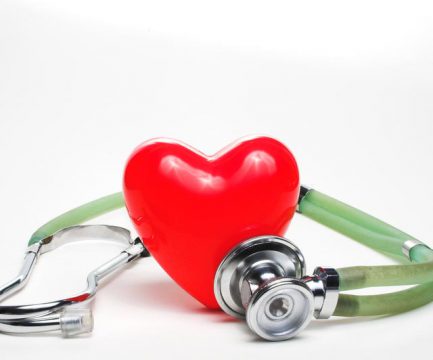How do I know if my heart is at risk?
“About 28 million Americans are considered to have an intermediate risk for having a heart attack or stroke”, says researcher Joseph Yeboah, MD, of Wake Forest University School of Medicine in Winston-Salem, N.C.
By having a “heart to heart” talk with your Doctor your cardiovascular risk can be screened as a part of a health risk assessment. For example an ECG, which stands for electrocardiogram, can be ordered which can reveal an underlying heart rate or rhythm dysfunction. With a strong family history for cardiovascular disease, you should be having an annual ECG screening. As a part of a cardiovascular screening, your Doctor may order an echocardiogram, ABPI, and a CIMT.
There Are Many Effective Tests Available
An echocardiogram shows the size, structure and movement of the different parts of your heart, including the valves, the septum (the wall separating the chambers on the right and left sides of the heart), and the walls of the heart chambers. The Doppler ultrasound technique shows the movement of blood through the heart.
The Ankle Brachial pressure Index (ABPI), also known as ABI, is the blood pressure in the lower legs divided by the blood pressure in the arms. With this test, our doctors can identify the potential for blocked arteries (peripheral vascular disease) or PAD. Atherosclerosis is a condition in which fatty material collects along the walls of arteries. This fatty material thickens, hardens (forms calcium deposits), and may eventually block the arteries.
The carotid intima-medial thickness CIMT test gives us a “window” to the coronary arteries and CIMT is an independent predictor of future cardiovascular events, including heart attacks, cardiac death and stroke. CIMT is a noninvasive test which is performed with a high-resolution B-mode ultrasound transducer. The CIMT is being recommended by the American Heart Association and the American College of Cardiology to screen for heart disease in apparently healthy individuals age 45 or greater. We can refer you to a lab or physician that does this testing.
Blood Tests Reveal Risk Factors
Blood tests are also very useful in determining a persons cardiovascular risk:
- High blood levels of the cholesterol found in smaller, denser LDL (sdLDL-C) particles are associated with atherosclerosis—the build-up of fatty materials in arteries—increasing the risk for CVD events.
- Lp(a) is an LDL-like particle with a protein known as apo(a) attached to it. An elevated level of Lp(a) is an independent risk factor for heart attack and other cardiovascular diseases.
- ApoB is a marker for the number of cholesterol carrying particles in the blood that cause atherosclerosis. Elevated levels are significant predictors of heart disease and are a more reliable indicator of CVD risk than LDL-C.
- CRP is produced in response to inflammation and excess deposition of cholesterol and other fats in the liver and other tissues. High levels predict CVD events, and CRP is a useful monitoring tool after initiating treatment.
- LpPLA2 is an enzyme produced by a type of white blood cell that causes inflammation in artery walls. Increased blood levels are associated with increased atherosclerosis. This test is also known as the PLAC test.
- Homocysteine is an amino acid that is produced by the body from the breakdown of methionine, an essential amino acid we receive from protein-rich foods. High levels of homocysteine are linked to a variety of specific health problems and are associated with increased risk for cardiovascular disease, peripheral artery disease, stroke and osteoporosis.
Know Your Blood Pressure Numbers
While "normal" blood pressure is considered to be 120/80. Optimal blood pressure is considered to be in the range of 110-120/70-80. Over 50 million people in the U.S. have hypertension, or high blood pressure, making it the most common heart disease risk factor. One in four adults has systolic blood pressure (the upper number) over 140, and/or diastolic blood pressure (the lower number) over 90, which is the definition of hypertension.
| Blood Pressure Category | Systolic mm Hg (upper #) | Diastolic mm Hg (lower #) | |
|---|---|---|---|
| Normal | less than 120 | and | less than 80 |
| Prehypertension | 120 – 139 | or | 80 – 89 |
| High Blood Pressure (Hypertension) Stage 1 |
140 – 159 | or | 90 – 99 |
| High Blood Pressure (Hypertension) Stage 2 |
160 or higher | or | 100 or higher |
| Hypertensive Crisis (Emergency care needed) |
Higher than 180 | or | Higher than 110 |
What Can You Do to Decrease Your Risk?
Lifestyle factors like diet and exercise can reduce your risk of heart disease no matter what age you are. The food you eat is perhaps the most important decision you are making each and every day. Ideally, you want to choose foods low in saturated fat. Avoid foods containing trans fats and sugar. Strive for 80% of your diet to be plant based and 20% from animal protein. Eat plenty of fruits and vegetables and fiber-rich whole grains. Oily fish should be consumed 2-3 times per week for optimal Omega 3 fatty acid intake. Other protein sources should be lean and skinless options like turkey or chicken. Try to increase the amounts of vitamins you consume, especially antioxidants, which have been shown to lower your risk for heart disease.
It is very important to stay physically active. Remember moving your legs helps to foster heart functioning. We should be exercising daily for at least 30-45 minutes per day! Many of us lead very sedentary lives. People who don't exercise have higher rates of death and heart disease compared to people who perform mild to moderate amounts of physical activity. Even leisure-time activities like gardening or walking can lower your risk of heart disease.

